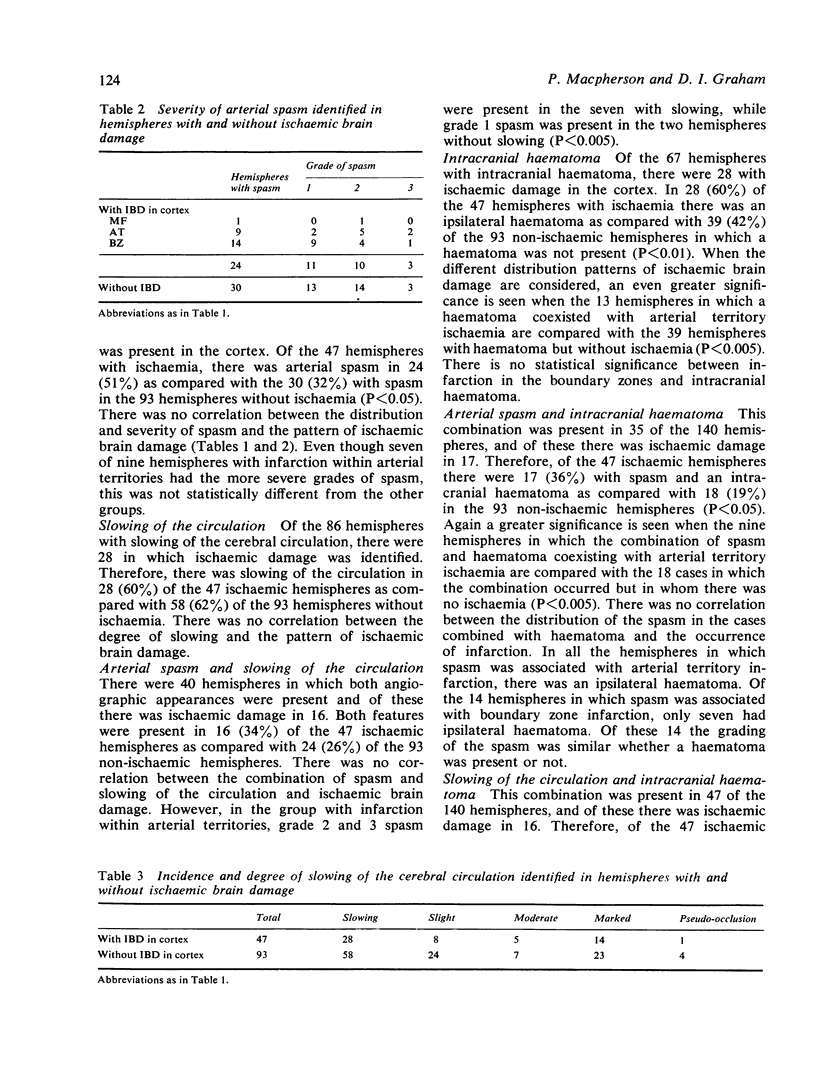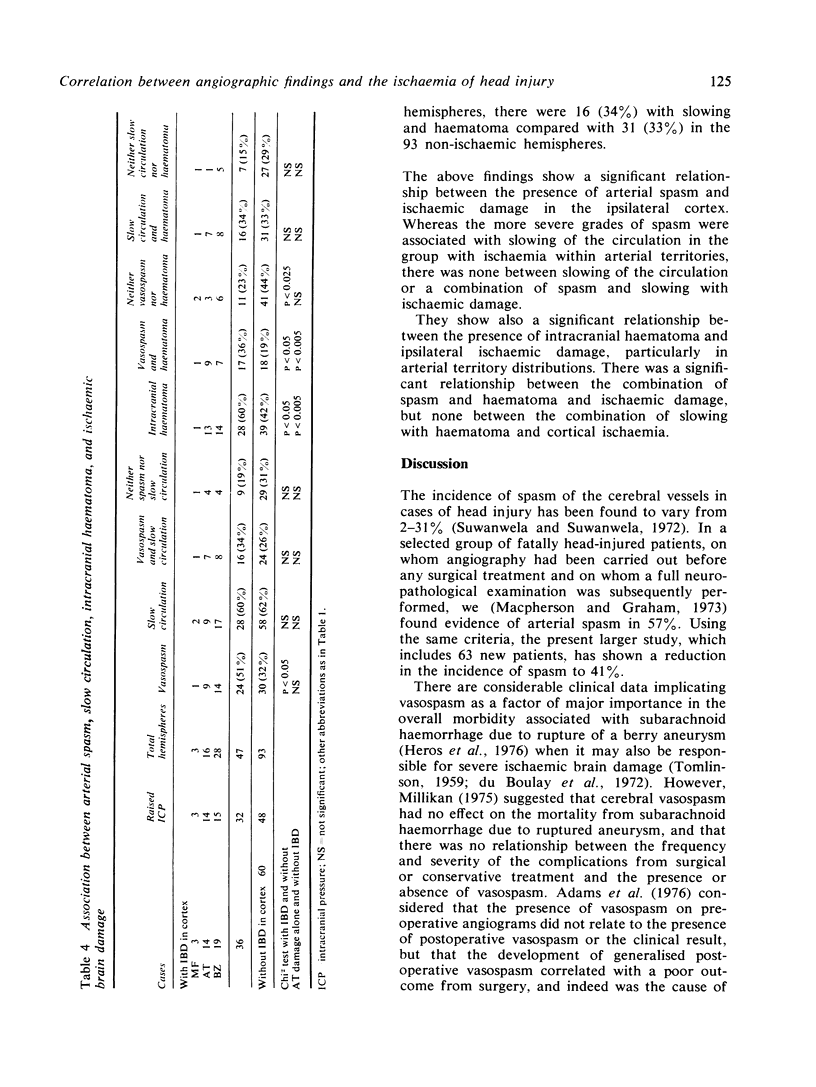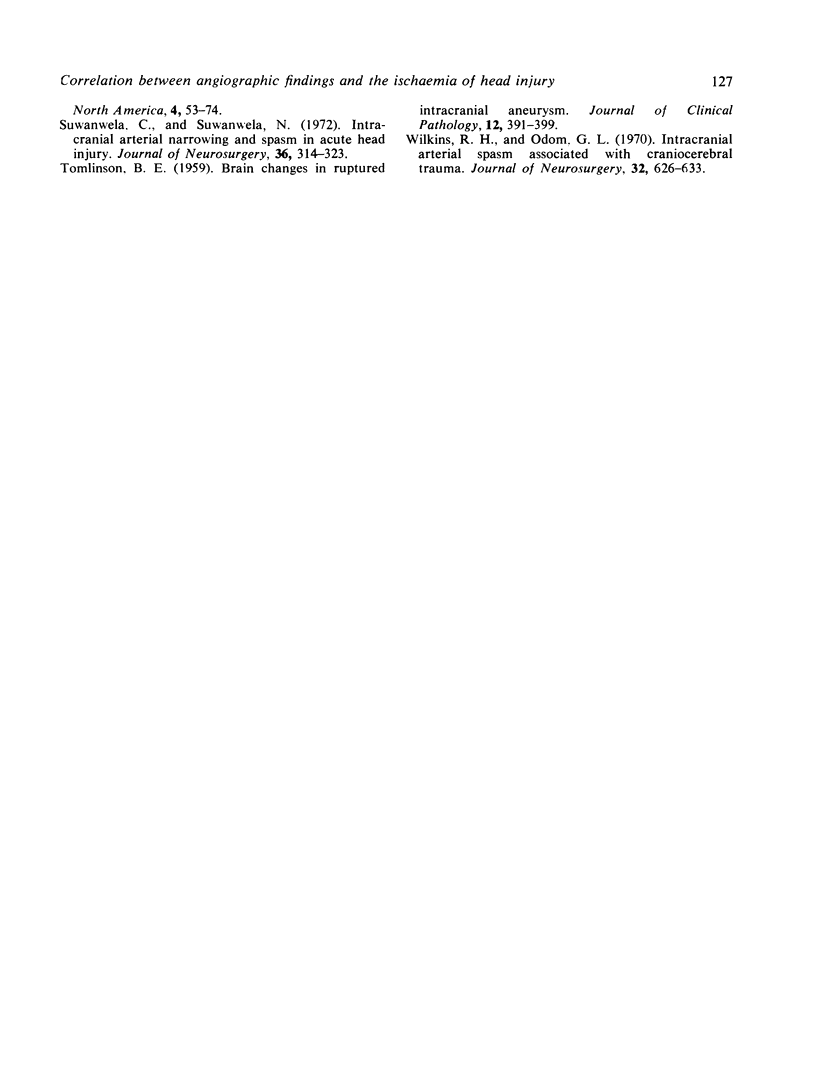Abstract
The carotid angiograms of 96 patients who had died from non-missile head injury were reviewed and assessed for evidence of arterial spasm, slowing of the cerebral circulation, and the presence of intracranial haemotoma. As bilateral angiography had been done in 44 cases the results are based on a correlation between the angiographic appearances and the presence or absence of ischaemic brain damage in the cortex of 140 cerebral hemispheres. There was a significant relationship between spasm alone, the presence of intracranial haematoma alone, or their combination, and ischaemic damage in the ipsilateral cortex. Apart from an association between the more severe grades of spasm and slowing of circulation in the group with ischaemia within arterial territories, there was none between slowing of the circulation or the combination of slowing with either spasm or haematoma and ischaemic brain damage.
Full text
PDF





Selected References
These references are in PubMed. This may not be the complete list of references from this article.
- Adams C. B., Loach A. B., O'laoire S. A. Intracranial aneurysms: analysis of results of microneurosurgery. Br Med J. 1976 Sep 11;2(6036):607–609. doi: 10.1136/bmj.2.6036.607. [DOI] [PMC free article] [PubMed] [Google Scholar]
- Bergeron R. T., Rumbaugh C. L. Non space-occupying sequelae of head trauma. Radiol Clin North Am. 1974 Aug;12(2):315–331. [PubMed] [Google Scholar]
- Du Boulay G., Symon L., Shah S., Dorsch N., Ackerman R. Cerebral arterial reactivity and spasm after subarachnoid haemorrhage. Proc R Soc Med. 1972 Jan;65(1):80–82. [PMC free article] [PubMed] [Google Scholar]
- Graham D. I. Pathology of hypoxic brain damage in man. J Clin Pathol Suppl (R Coll Pathol) 1977;11:170–180. doi: 10.1136/jcp.s3-11.1.170. [DOI] [PMC free article] [PubMed] [Google Scholar]
- Heros R. C., Zervas N. T., Negoro M. Cerebral vasospasm. Surg Neurol. 1976 Jun;5(6):354–362. [PubMed] [Google Scholar]
- Macpherson P., Graham D. I. Arterial spasm and slowing of the cerebral circulation in the ischaemia of head injury. J Neurol Neurosurg Psychiatry. 1973 Dec;36(6):1069–1072. doi: 10.1136/jnnp.36.6.1069. [DOI] [PMC free article] [PubMed] [Google Scholar]
- Millikan C. H. Cerebral vasospasm and ruptured intracranial aneurysm. Arch Neurol. 1975 Jul;32(7):433–449. doi: 10.1001/archneur.1975.00490490037003. [DOI] [PubMed] [Google Scholar]
- Suwanwela C., Suwanwela N. Intracranial arterial narrowing and spasm in acute head injury. J Neurosurg. 1972 Mar;36(3):314–323. doi: 10.3171/jns.1972.36.3.0314. [DOI] [PubMed] [Google Scholar]
- TOMLINSON B. E. Brain changes in ruptured intracranial aneurysm. J Clin Pathol. 1959 Sep;12:391–399. doi: 10.1136/jcp.12.5.391. [DOI] [PMC free article] [PubMed] [Google Scholar]
- Wilkins R. H., Odom G. L. Intracranial arterial spasm associated with craniocerebral trauma. J Neurosurg. 1970 Jun;32(6):626–633. doi: 10.3171/jns.1970.32.6.0626. [DOI] [PubMed] [Google Scholar]


